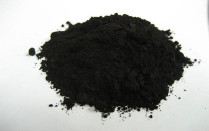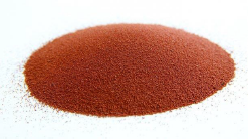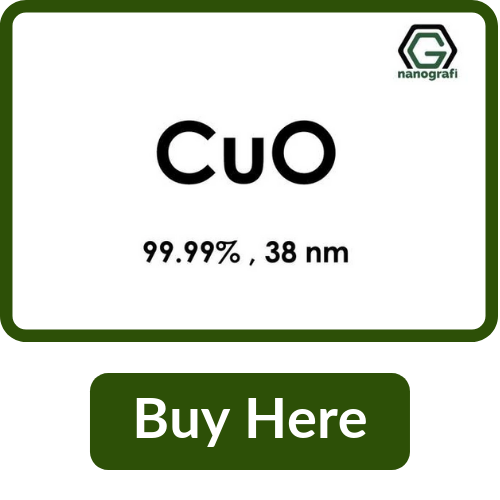Copper, which is a d block element, is named as cuprous or cupric based on the electronic configuration. The main difference between cuprous and cupric is that cuprous is copper +1 cation whereas cupric is copper +2 cation. When copper is reacted with oxygen, two stable compounds Cu2O and CuO form.
Copper Oxide is the inorganic compound with the formula CuO (Figure 1) also known as ‘cupric oxide’. In this form, Cu is in the form of Cu+2 and the electron configuration of the Cu changes from [Ar]3d104s1 to [Ar]3d94s0. It is known as tenorite as a mineral (Figure 2). CuO can be obtained by using pyrometallurgical processes.

Figure 1: Copper Oxide (CuO) Powder
Cuprous Oxide is the other stable compound of Copper with formula Cu2O. In this form, Cu is in the form of Cu+1. Its electron configuration changes from [Ar]3d104s1 to [Ar]3d104s0 so it is more stable compared to copper(II) oxide. CuO(Figure 3) is generally obtained via the oxidation of copper and it can have yellow or red color. Cu2O degrades to CuO in moist air. This product is a toxic compound and it can cause acute poisoning when exposed to 1-2 hours if it is presented in air at a content of 0.22-14mg/mg3.

Figure 2: Powder Cu2O (Cuprous Oxide)
Differences between Copper Oxide (CuO) and Cuprous Oxide (Cu2O) Nano Powders
In terms of structure, copper oxide has a monoclinic crystal structure where Cu is coordinated by 4 oxygen atoms whereas cuprous oxide has cubic structure where Cu atoms are placed in FCC sublattice and oxygen atoms are placed in BCC sublattice.
Solid Cu2O is diamagnetic while CuO exhibits antiferromagnetic ordering.
Both are p-type semiconductors, but Cu2O has a band gap of 2eV whereas CuO has a band gap of 1.2 eV – 1.9 eV.
Cu2O is obtained by oxidation of copper metal or reduction of copper(II) solutions with sulfur oxide, whereas CuO is obtained by pyrometallurgical processes used to extract copper from ores.
Applications of Copper Oxide (CuO) Nanoparticles
- Many of the wood preservatives are made of copper.
- It is also used as a pigment to create different glazes.
- Used when welding with copper alloys.
Applications of Cuprous Oxide (Cu2O) Nanoparticles
- Used as a pigment and antifouling agent form marine paints to kill low-level marine animals.
- Used for coating of ship bottom paint.



Comments
Post a Comment